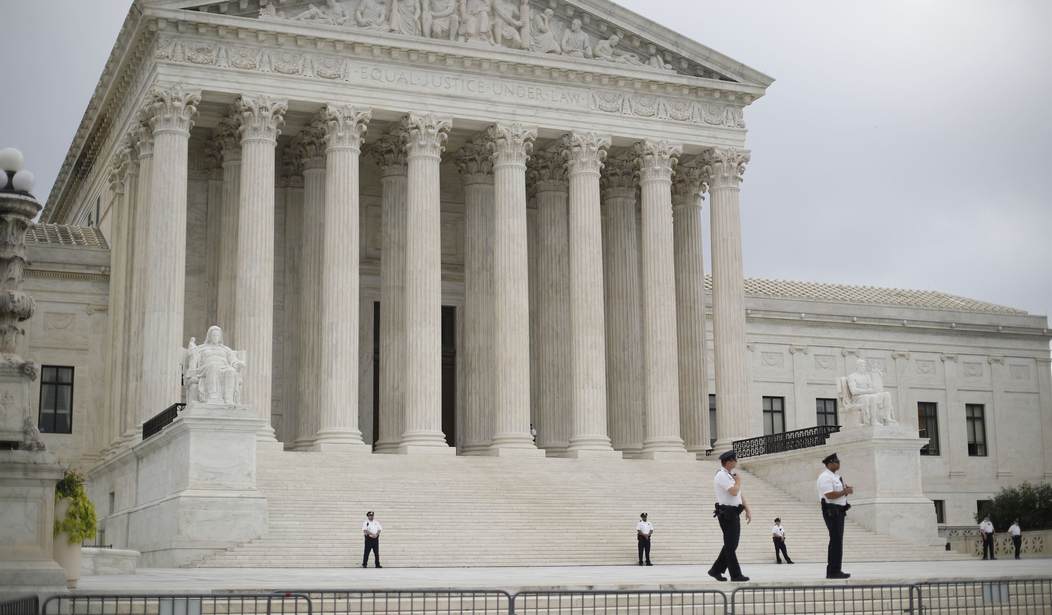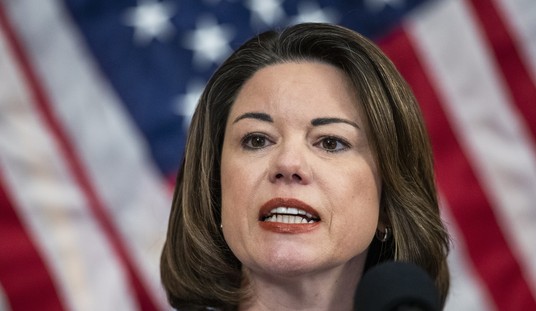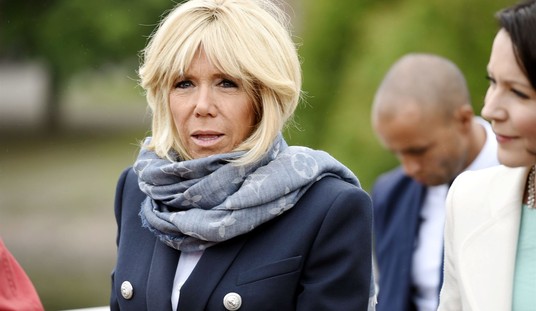There are several important facts to understand in connection with the Supreme Court Order handed down late on Friday in yet another case involving restrictions on religious freedom imposed by California’s COVID-19 protocols and restrictions.
Before I get to the outcome, I want to highlight one passage from the order which I believe is a “marker” the majority is laying down for fights yet to come — fights for which a majority of the Court seems to be prepared to engage.
Applicants are likely to succeed on the merits of their free exercise claim; they are irreparably harmed by the loss of free exercise rights “for even minimal periods of time…”
This language seems to emphasize the “supremacy” of free exercise claims in the view of the five-Justice majority. This may be why CJ Roberts chose to not join the majority, as it goes against his incrementalist approach to developing new Court precedent. I predict the five Justices in the majority will return to this sentence in future cases on a host of religious freedom matters that are currently the subject of litigation around the country, many of which involve clashes between the constitutionally grounded religious free exercise right, and statutorily based “civil rights.”
Turning to the outcome based on the order issued by the Court later on Friday — which came only 7 hours after the final brief was filed by the parties — there are a few key issues to note.
First, this was not a decision on the “merits” of the case now pending in the Ninth Circuit. What was under Supreme Court review was the refusal by the Ninth Circuit to grant an injunction against enforcement of the California restrictions while the case is pending before the Ninth Circuit. The question was whether California would be allowed to enforce the restrictions in place while it defended the case on appeal after the restriction had been upheld by a district court judge in San Jose. The Ninth Circuit had declined to issue an injunction while the matter was being reviewed, and late on Friday the Supreme Court reversed that decision and ordered that the injunction be issued while the matter is pending review.
The full briefing of the merits of the case is not yet before the Ninth Circuit, and it was not before the Supreme Court. But, the issue of whether or not to issue an injunction does turn to a significant degree on a determination as to which party is “more likely” to prevail on the merits when the case is finally briefed and decided.
This fact, in and of itself, is worth some discussion. Orders such as this are referred to as the “shadow docket”. These orders do not resolve the underlying cases on the merits in the same manner as Court Opinions issued after cases are fully briefed and argued. Nevertheless, the five Justices who have consistently blocked enforcement of various COVID regulations by ordering preliminary injunctions are, in doing so, creating a new body of law on the issue of religious liberty and government regulation of the free exercise of religion. The Court is sending these cases back to the appellate courts with clear guidance on what the ultimate outcome should be, and it is quite possible that the Court will never take up any of these cases to bring the analysis together in one opinion. These orders, and the manner in which they have come about, will be studied by legal scholars in the years ahead.
Second, this was not the stereotypical Ninth Circuit decision that conservative commentators are so used to reflexively criticizing for no other reason than the fact that it was issued by the Ninth Circuit — a court that has been historically dominated by liberal appointees going back to Jimmy Carter. The Ninth Circuit decision included a partial concurrence and partial dissent by one of the three judges. That means that all three judges agreed with the outcome in some respects and that one of the three judges only partly disagreed with his two colleagues in other respects.
But here is the rub — the author of the Ninth Circuit’s opinion was Judge Milan Smith, appointed by Pres. Bush 43 in 2006. The other two judges on the case were Judge Bade and Judge Bumatay — both of whom were appointed to the Ninth Circuit by Pres. Trump in 2019.
This was a decision from a three-judge panel of conservatives who denied the motion for a preliminary injunction that was the subject of Friday’s Order. This was not a “conservative v. liberal” decision. Those suggesting that Judge Roberts joined with the liberals ignore the fact that in voting to sustain the Ninth Circuit’s decision, he was voting to uphold a decision made by three conservative judges on the Ninth Circuit.
He did NOT join the dissent written by Justice Kagan, in which Justices Breyer and Sotomayor joined. All CJ Roberts did was find that, on the basis of the record established at this early juncture in the Ninth Circuit below, the test for issuing a preliminary injunction had not been met. He did not write to explain his reasons why.
Third, the five Justices that did vote in favor of issuing the injunction made it clear their patience has run out with the efforts of the California state government’s continued attempts to “write around” the prior decisions of the Court invalidating a variety of restrictions imposed on religious freedom in California, noting this is the fifth time it has taken up decisions from the Ninth Circuit which allowed certain provisions adopted by California to remain in place pending review.
At issue in the California case is a COVID restriction that limited gatherings for religious purposes in private homes to the members of no more than three families. California attempted to justify the regulation by pointing to the fact that the same regulation limited all social gatherings in private homes to the members of no more than three families — gatherings for religious purposes were subject to the same restrictions as similar gatherings for non-religious purposes. Because the restrictions were the same, there was no unconstitutional burden on the free exercise of religion.
Here is what SCOTUS wrote:
…. whether two activities are comparable for purposes of the Free Exercise Clause must be judged against the asserted government interest that justifies the regulation at issue. (slip op., at 3) (describing secular activities treated more favorably than religious worship that either “have contributed to the spread of COVID–19” or “could” have presented similar risks). Comparability is concerned with the risks various activities pose, not the reasons why people gather.
What the Court is saying is that the “purpose” for the gathering is not the relevant consideration — so comparing “social” gatherings and “religious” gatherings of the same size in similar surroundings — a private home — is not the correct way to examine the restriction under review.
Rather, it is the fact that California limits ANY inside gathering for religious purposes while allowing inside gatherings for non-religious purposes, is the question to be addressed. If grocery stores are allowed to operate at 50% capacity — and indoor activity — what is the governmental interest in restricting gatherings in private homes to the members of three families? It is the government’s burden to prove that gatherings in private homes for religious purposes present a greater public health risk than other indoor gatherings held in different kinds of venues for any other purposes.
Where the government permits other activities to proceed with precautions, it must show that the religious exercise at issue is more dangerous than those activities even when the same precautions are applied. Otherwise, precautions that suffice for other activities suffice for religious exercise too.
So long as California allows indoor shopping at grocery stores, or other types of activities at other kinds of indoor facilities, it cannot impose restrictions on religious services any greater than it imposes on those other indoor activities UNLESS the State can prove that the religious services in question pose a greater risk to public health than the other activities allowed to take place indoors.
California treats some comparable secular activities more favorably than at-home religious exercise, permitting hair salons, retail stores, personal care services, movie theaters, private suites at sporting events and concerts, and indoor restaurants to bring together more than three households at a time.
Because religious freedom is protected under the First Amendment, it enjoys at least as much protection from regulation as any other indoor activity that is permitted, and the comparison to other at-home indoor activities is too narrow a comparison to make. As the Court said forcefully:
It is no answer that a State treats some comparable secular businesses or other activities as poorly as or even less favorably than the religious exercise at issue.
This is where the Ninth Circuit’s approach ran afoul of prior SCOTUS decisions. But the reason it ran afoul wasn’t that the Ninth Circuit judges were attempting to save California’s — it was because the nature of the litigation in all the cases decided by the Supreme Court has been preliminary (all injunction cases), and the individual cases address the specific factual restrictions and shortcomings that were under attack in those cases. The Supreme Court has not laid down any “bright line” rules in those earlier cases, it addressed the specific restrictions in those cases and the particular reasons why those restrictions violated the Free Exercise Clause of the First Amendment. Here is a sample of what the Ninth Circuit panel attempted to do:
But as we explain below, from our review of these recent Supreme Court decisions, we conclude that Appellants are making the wrong comparison because the record does not support that private religious gatherings in homes are comparable—in terms of risk to public healthor reasonable safety measures to address that risk—to commercial activities, or even to religious activities, in public buildings. When compared to analogous secular in-home private gatherings, the State’s restrictions on in-home private religious gatherings are neutral and generally applicable and, thus, subject to rational basis review.
The Ninth Circuit panel looked at the prior decisions of SCOTUS which evaluated similar gathering venues and allowed occupancy under other types of regulations — churches v. shopping venues — and concluded its task was to compare the impact of the California restriction on in-home religious activities with the impact on in-home non-religious activities. Since both were similarly burdened by the California restriction — unlike the churches v. shopping venues in earlier SCOTUS decisions which were unequally burdened — the Ninth Circuit concluded the restrictions on in-home services would survive constitutional scrutiny.
But this approach failed to give sufficient importance to the constitutional foundation of religious free exercise. It’s not that the Ninth Circuit was defending California’s restriction, the Ninth Circuit simply drew the wrong conclusion from prior SCOTUS’s orders as to what analytic framework it should employ. In some respects this is a product of the fact that the Supreme Court has developed this body of law via the “shadow docket” and not in one comprehensive majority opinion on the issues being decided.














Join the conversation as a VIP Member